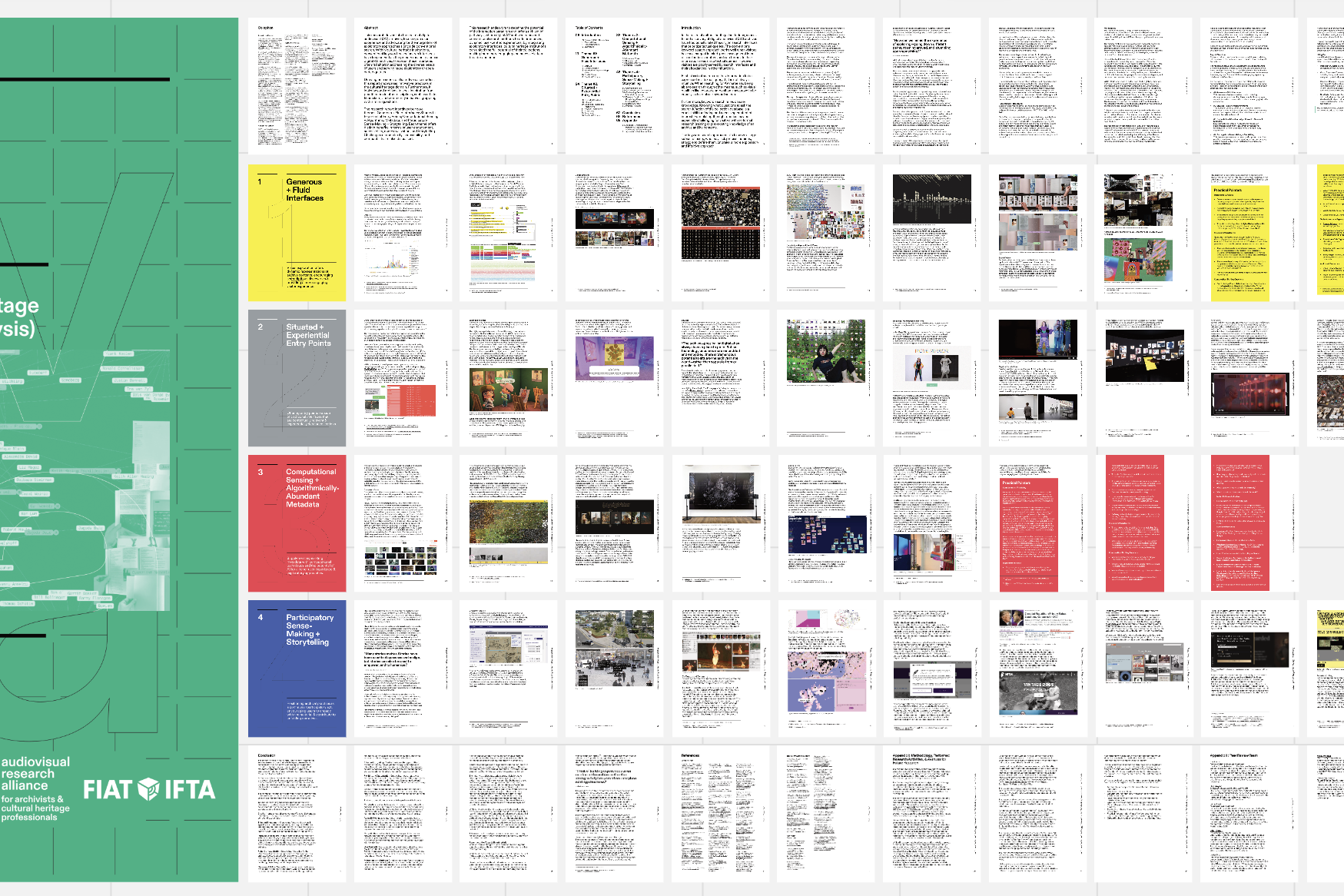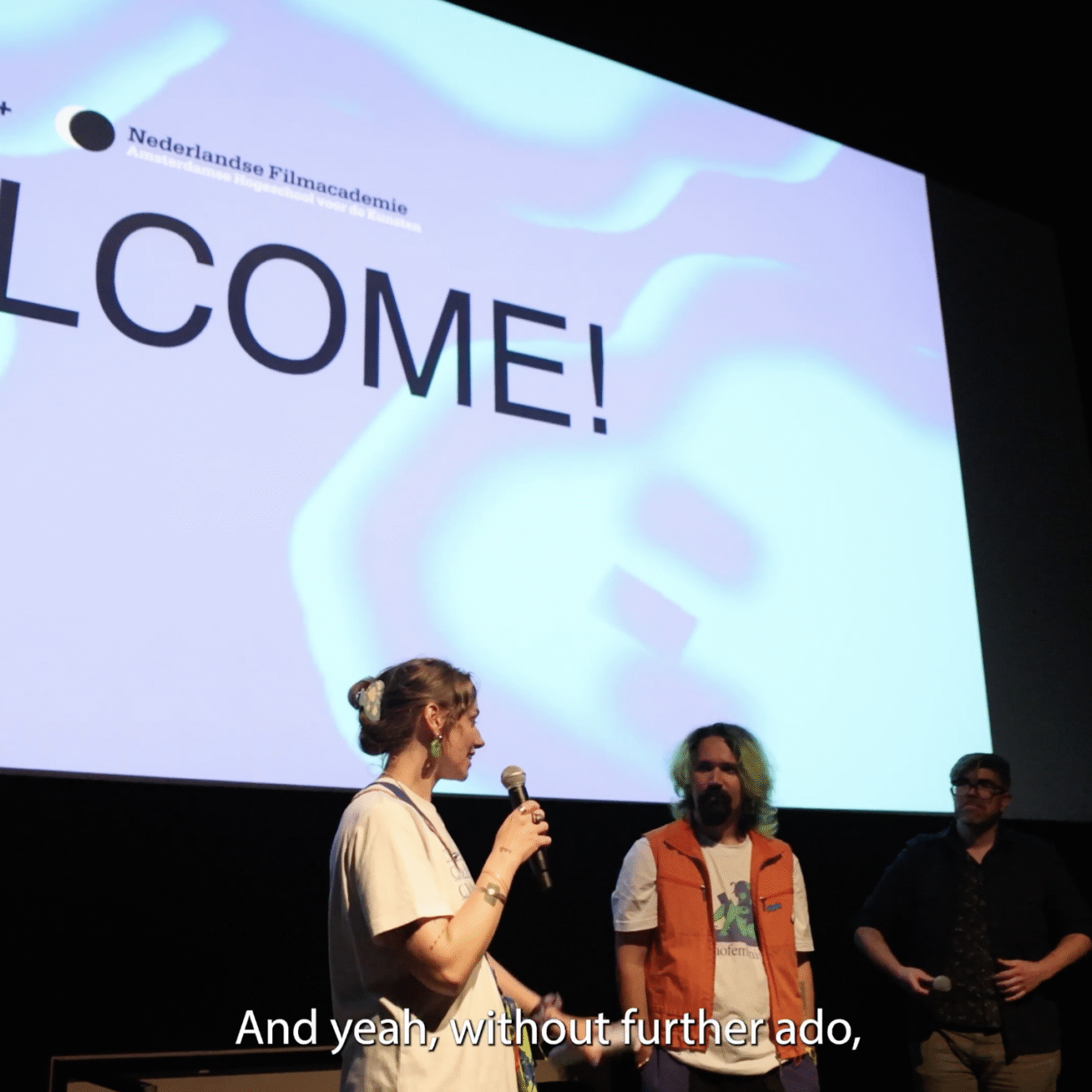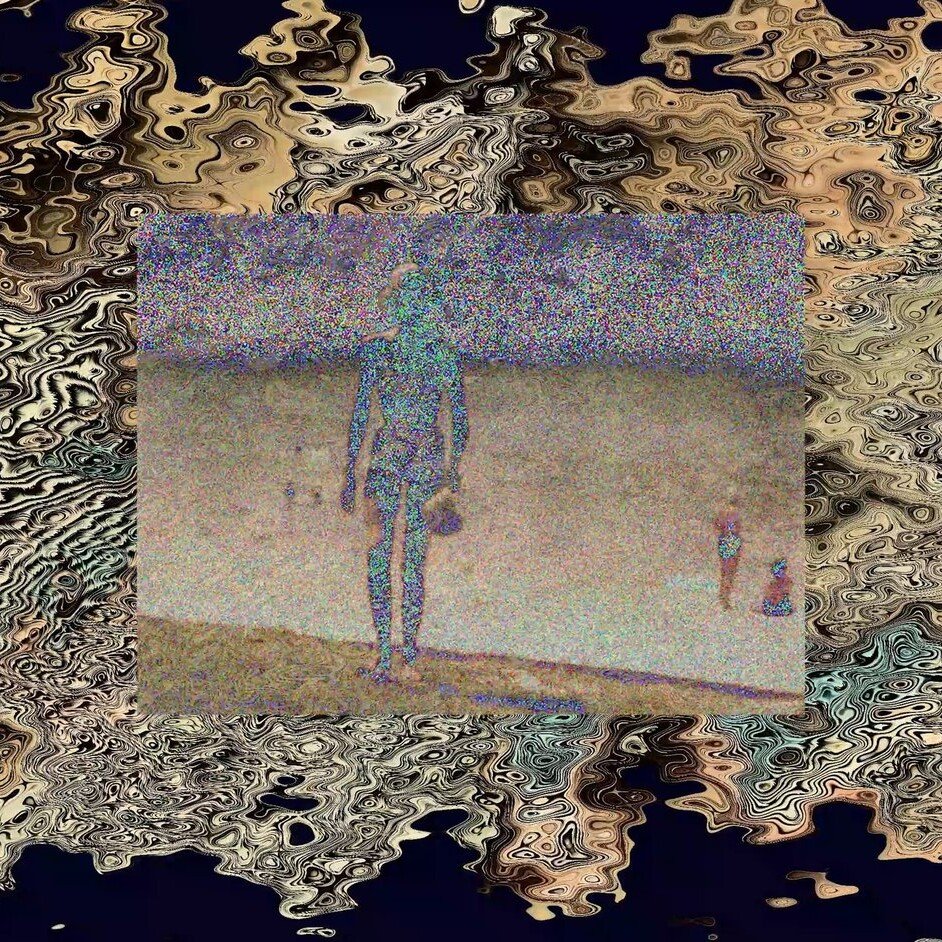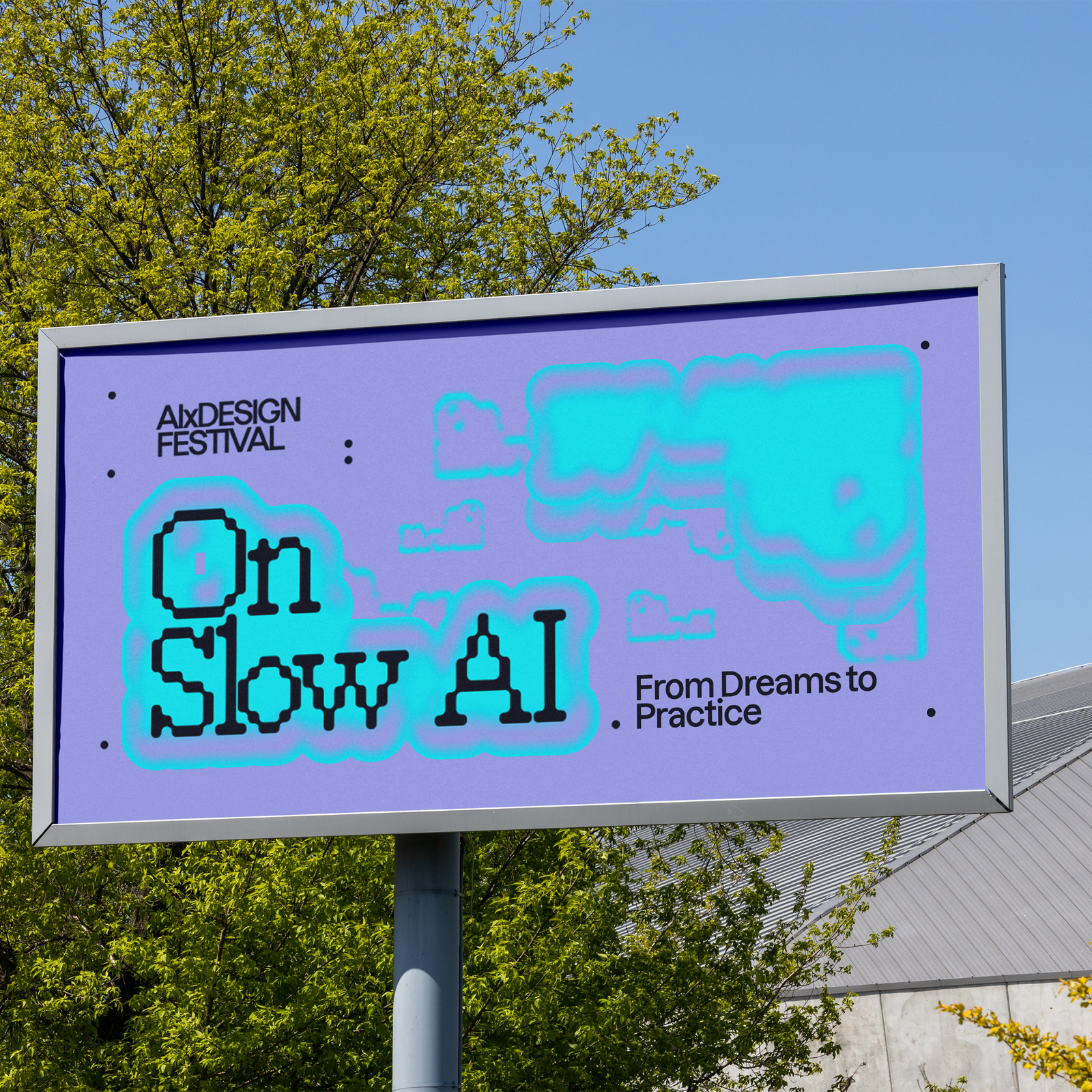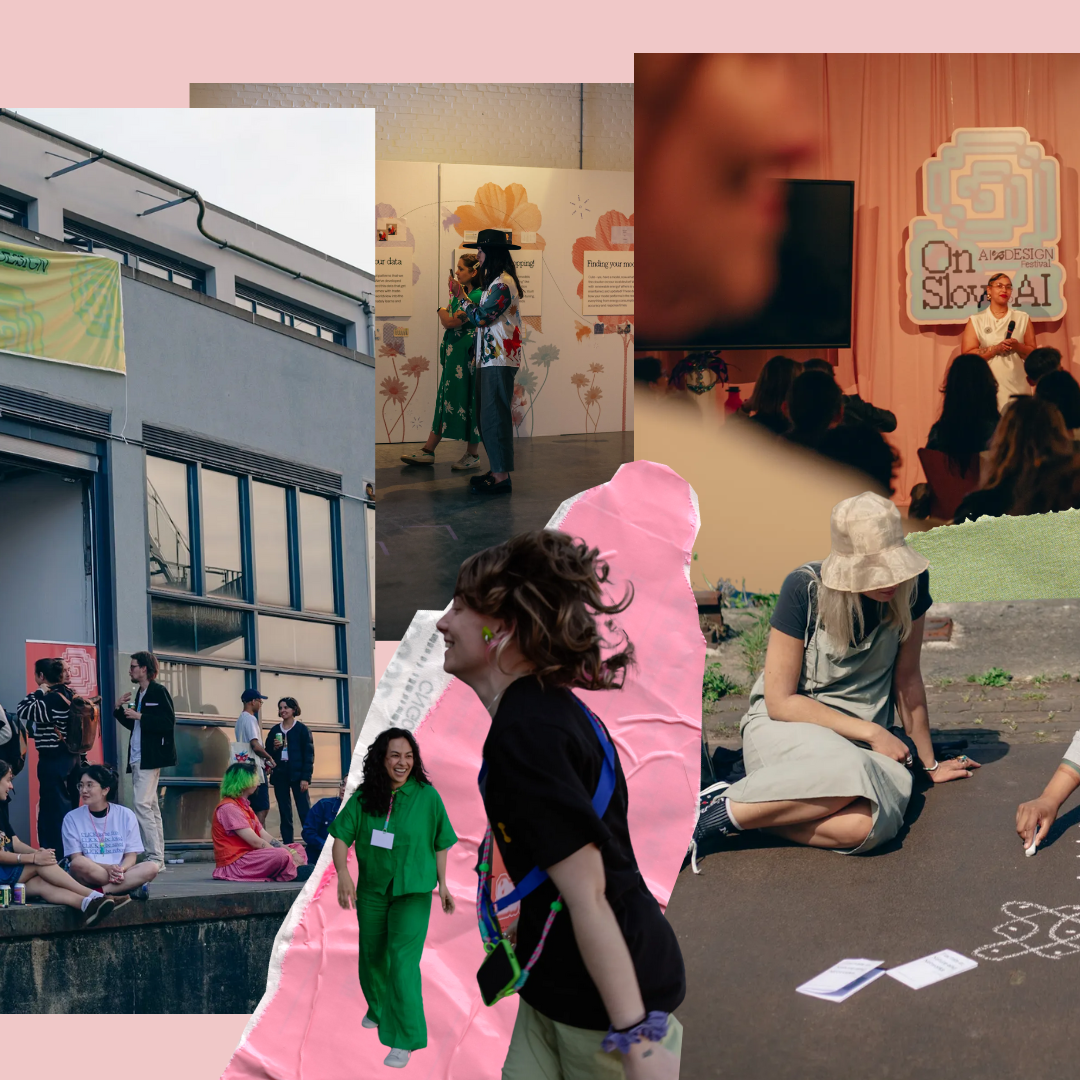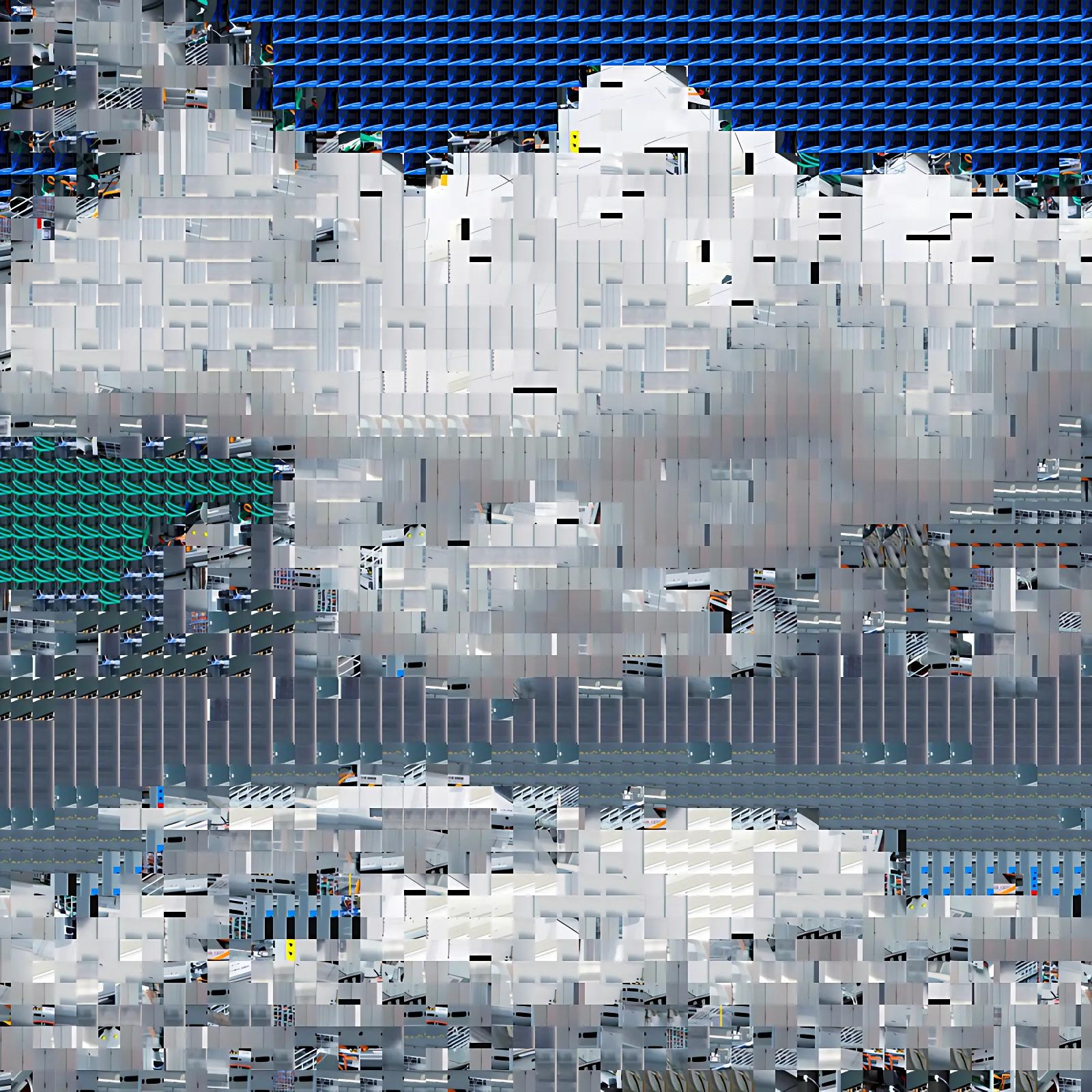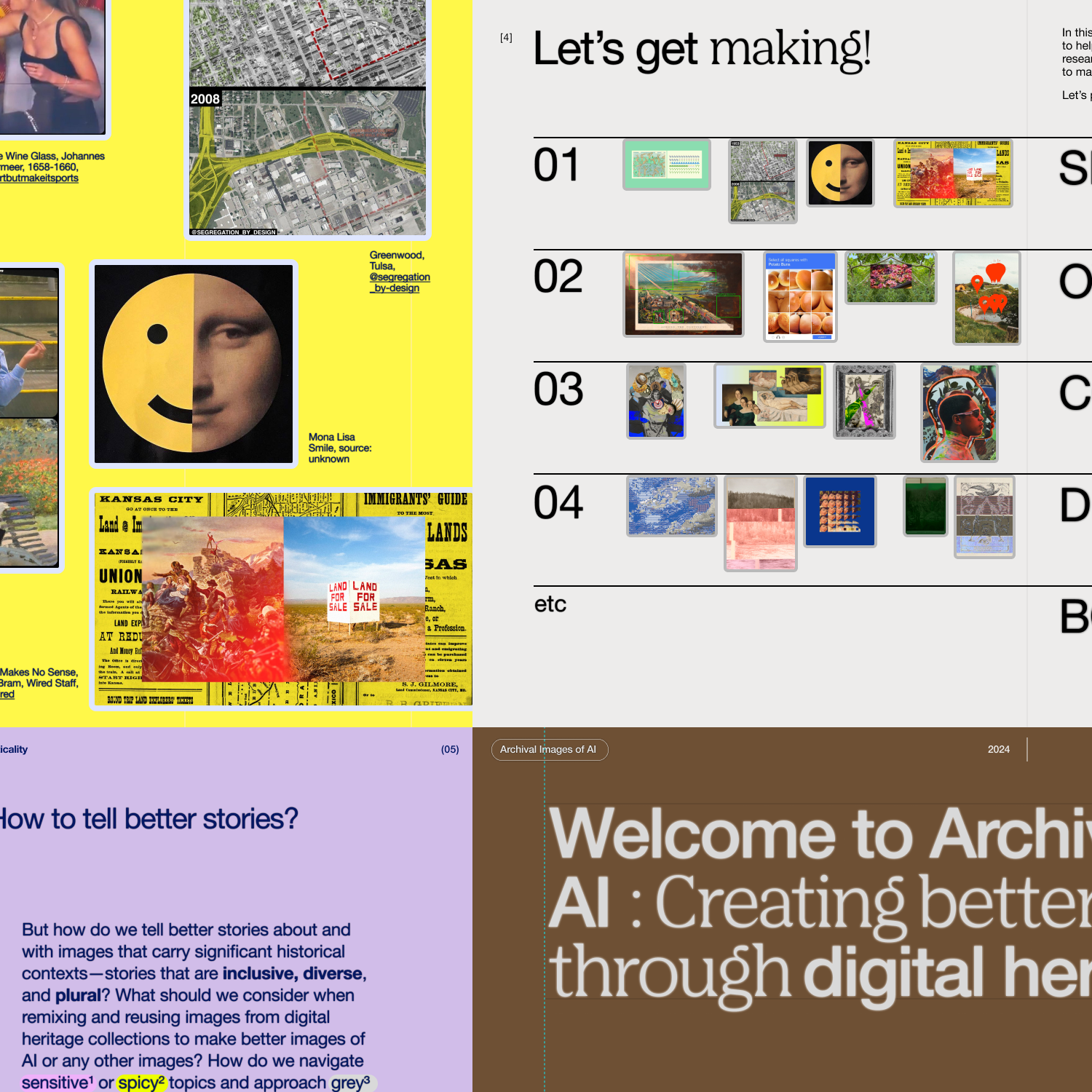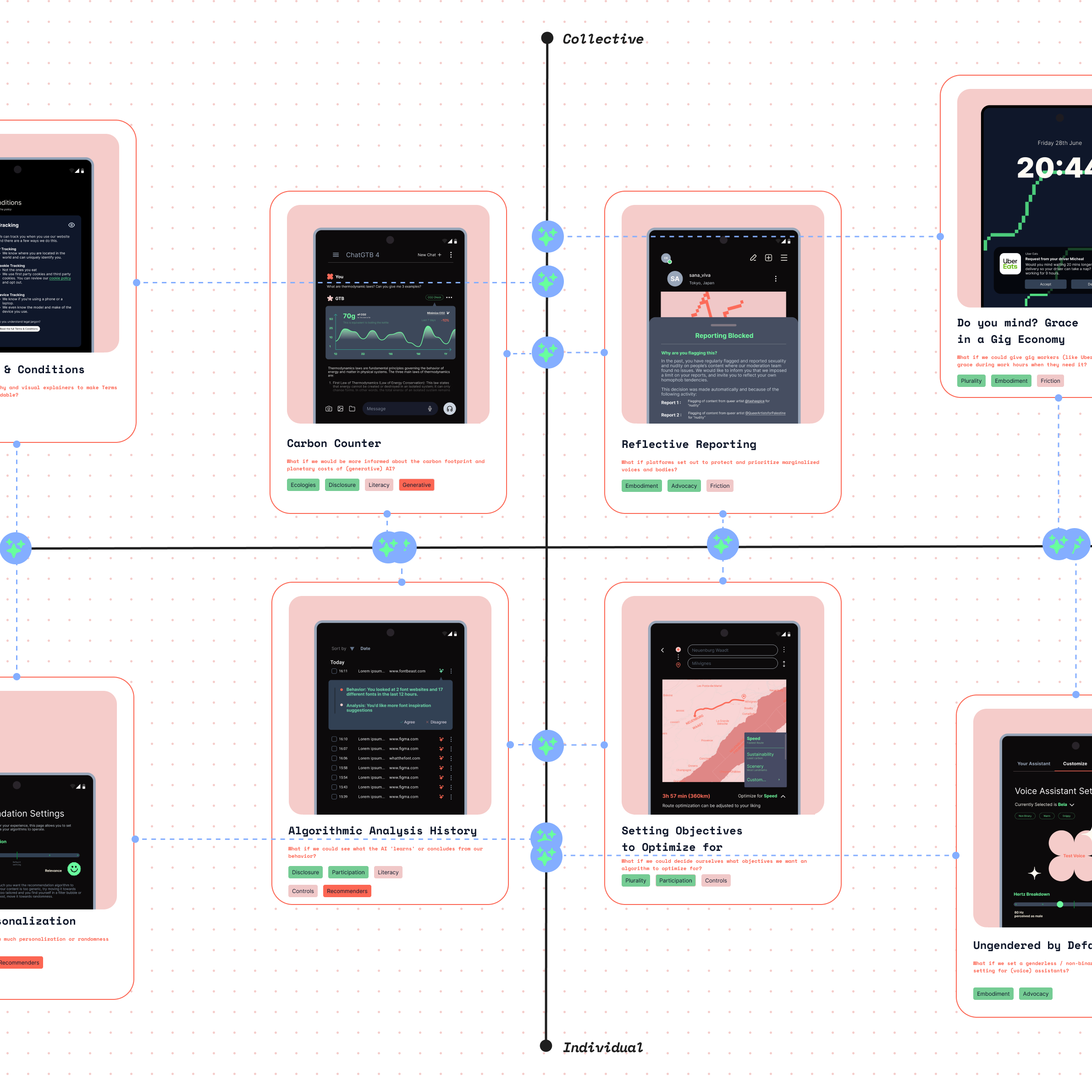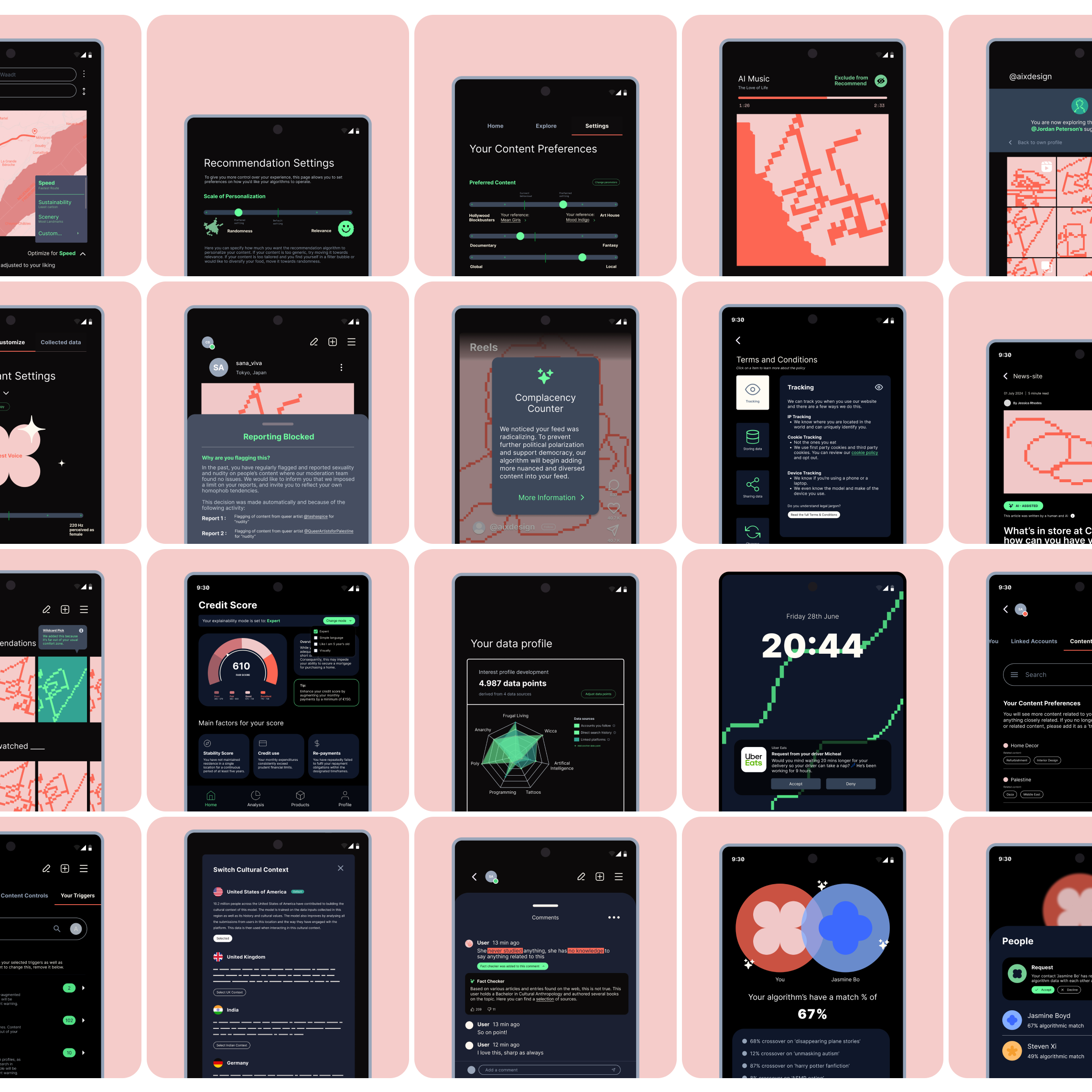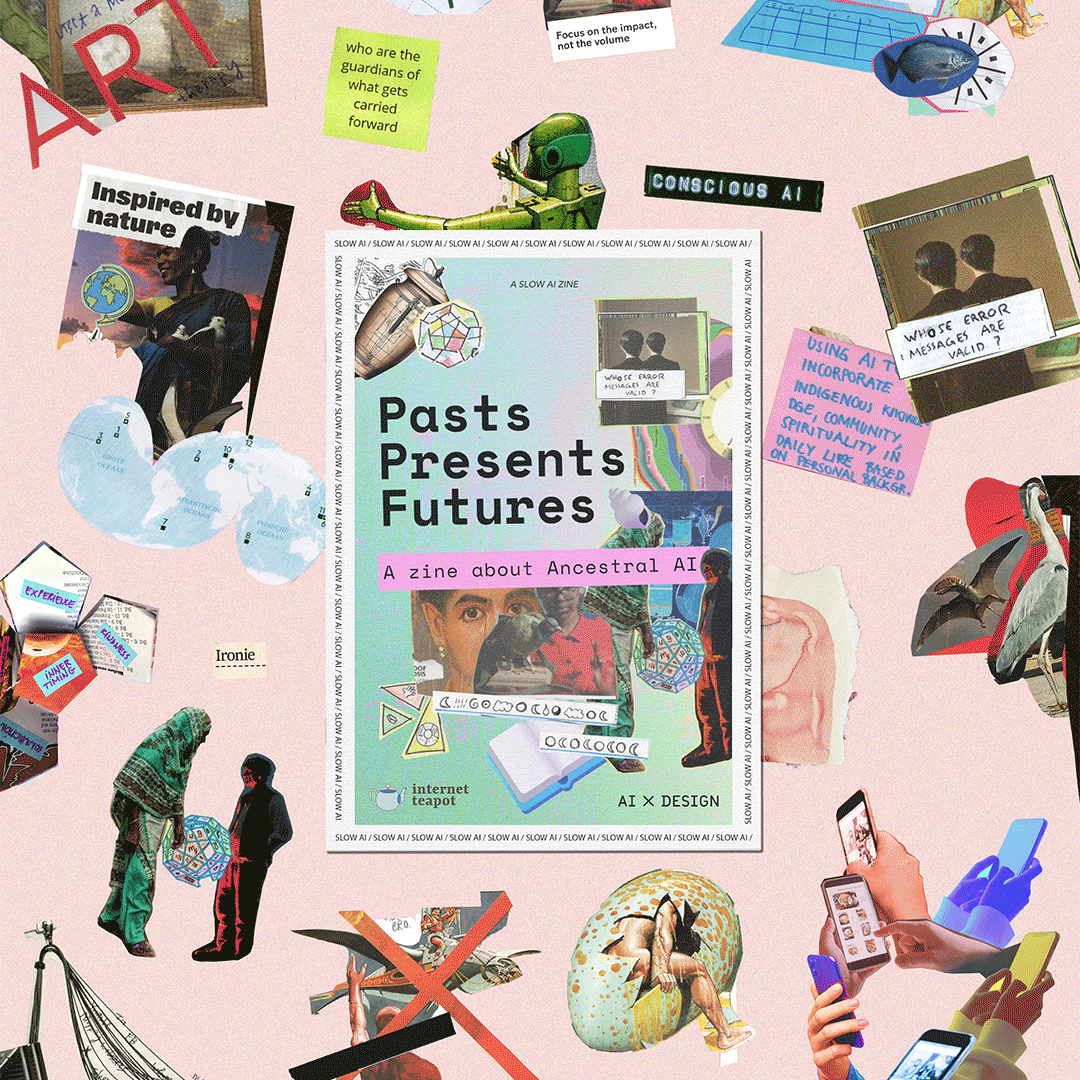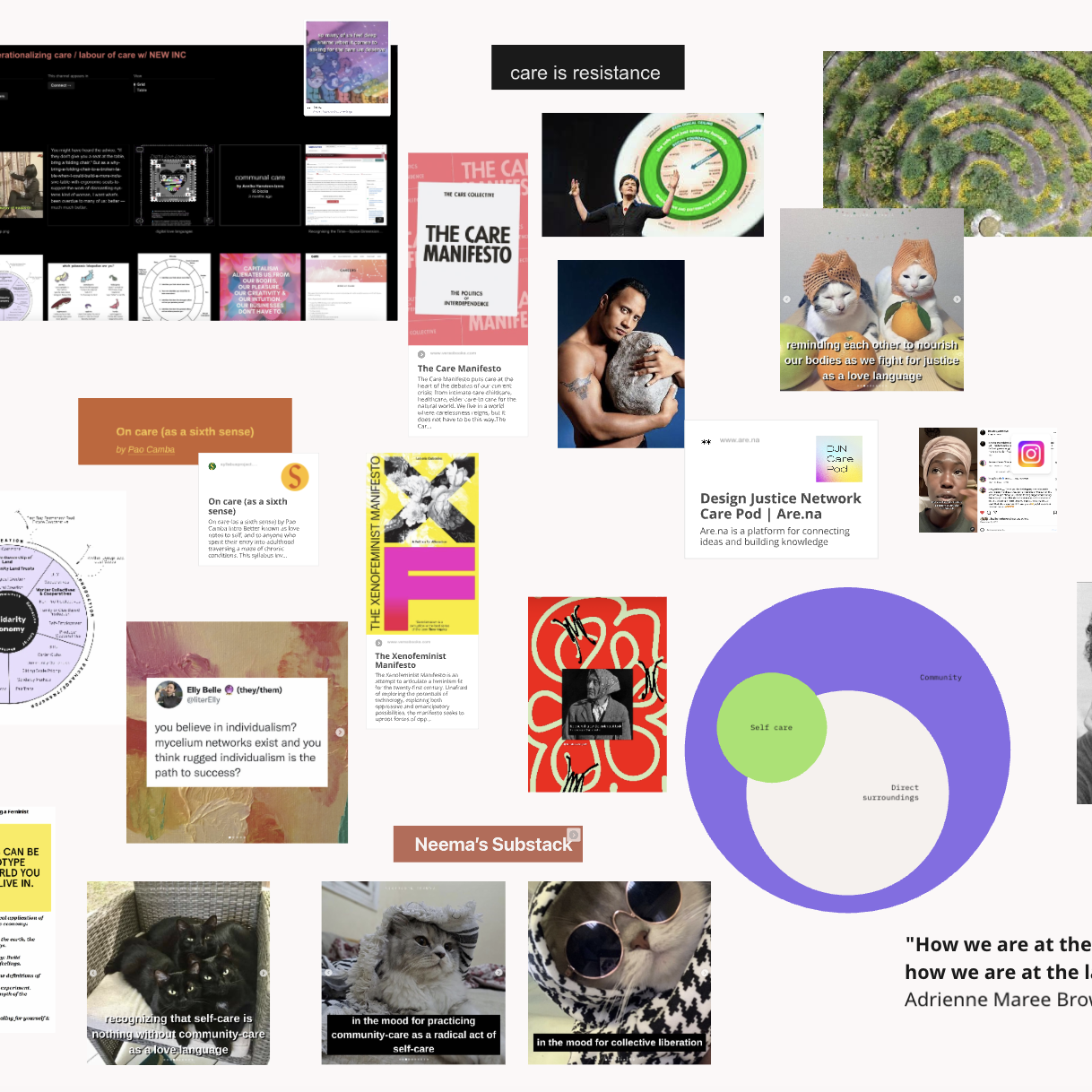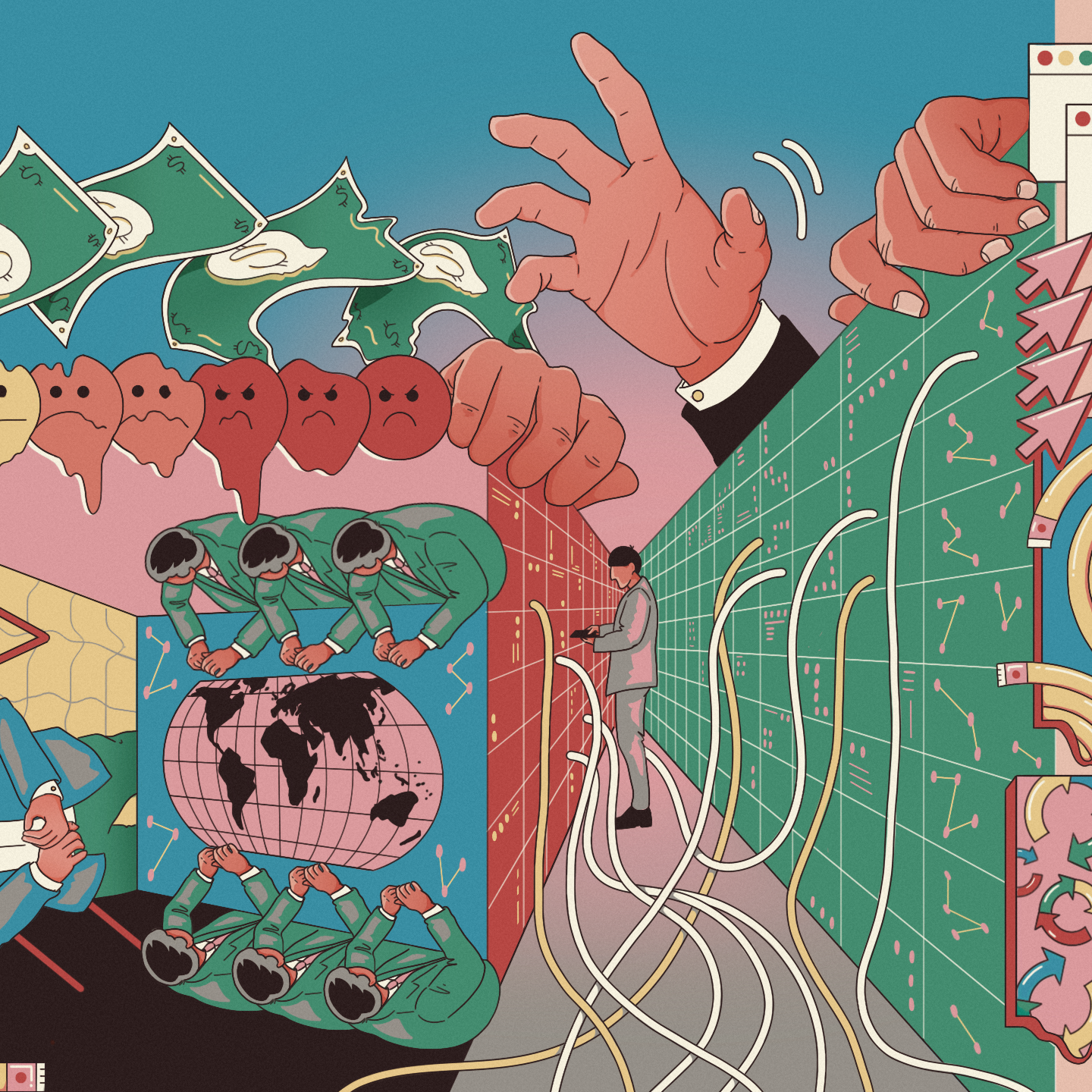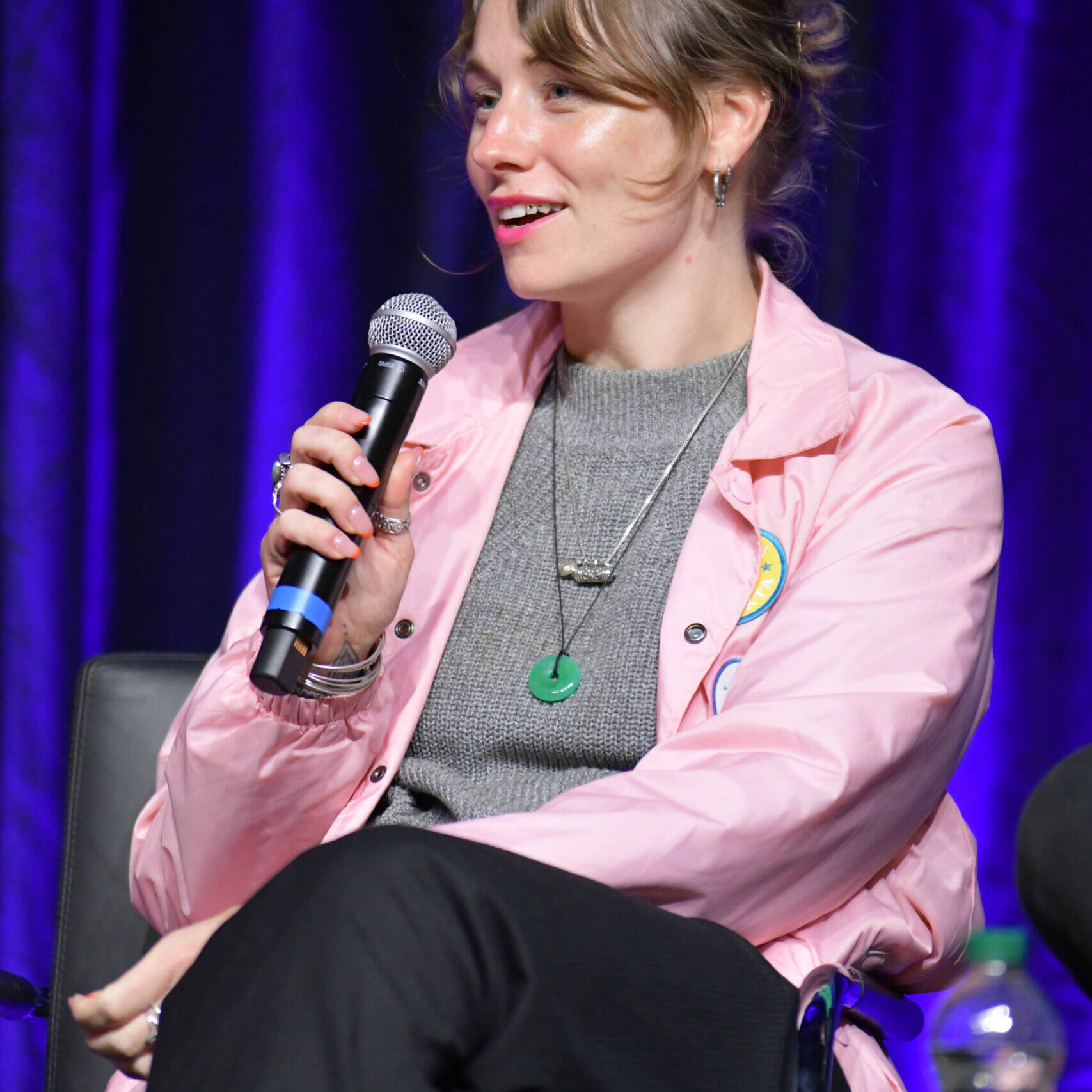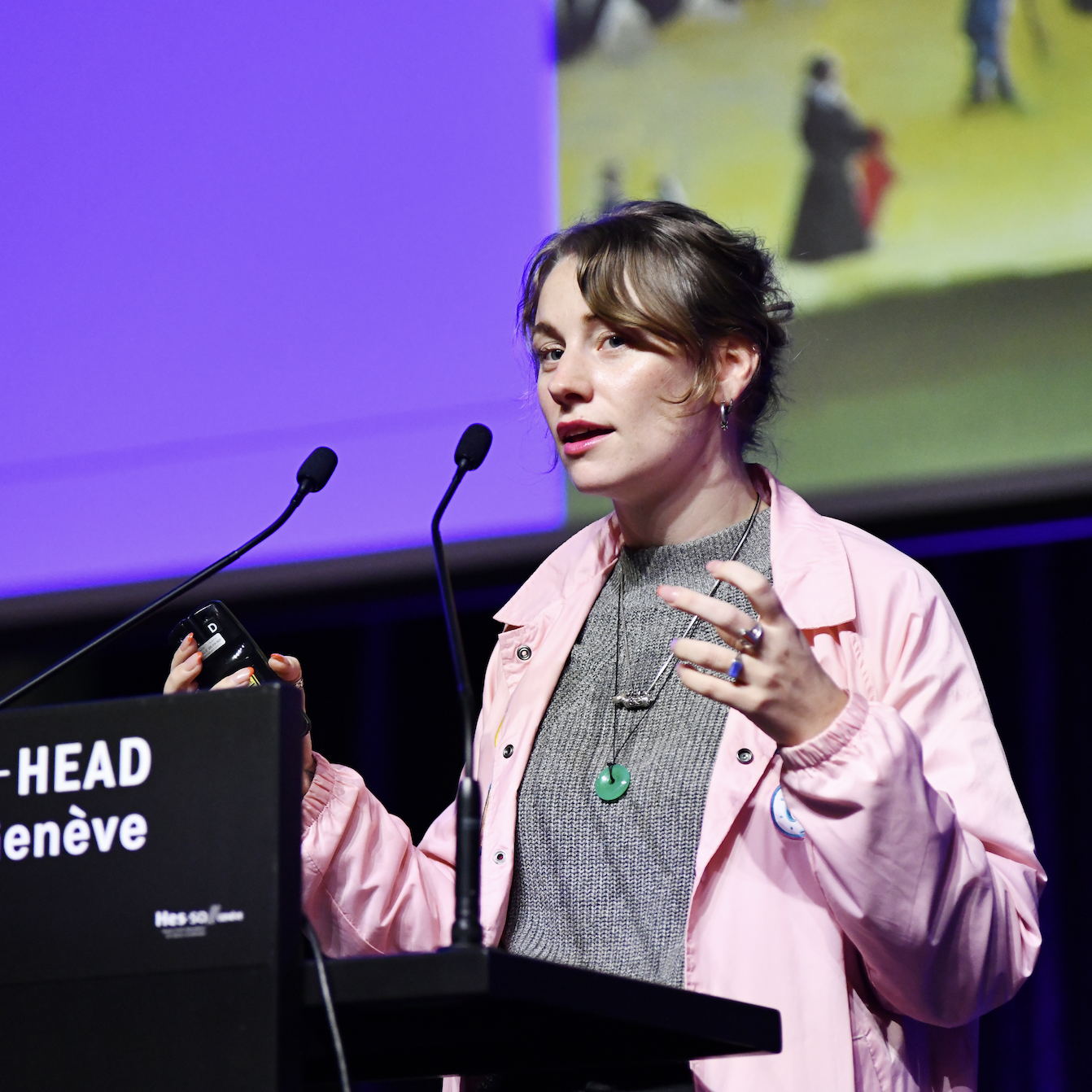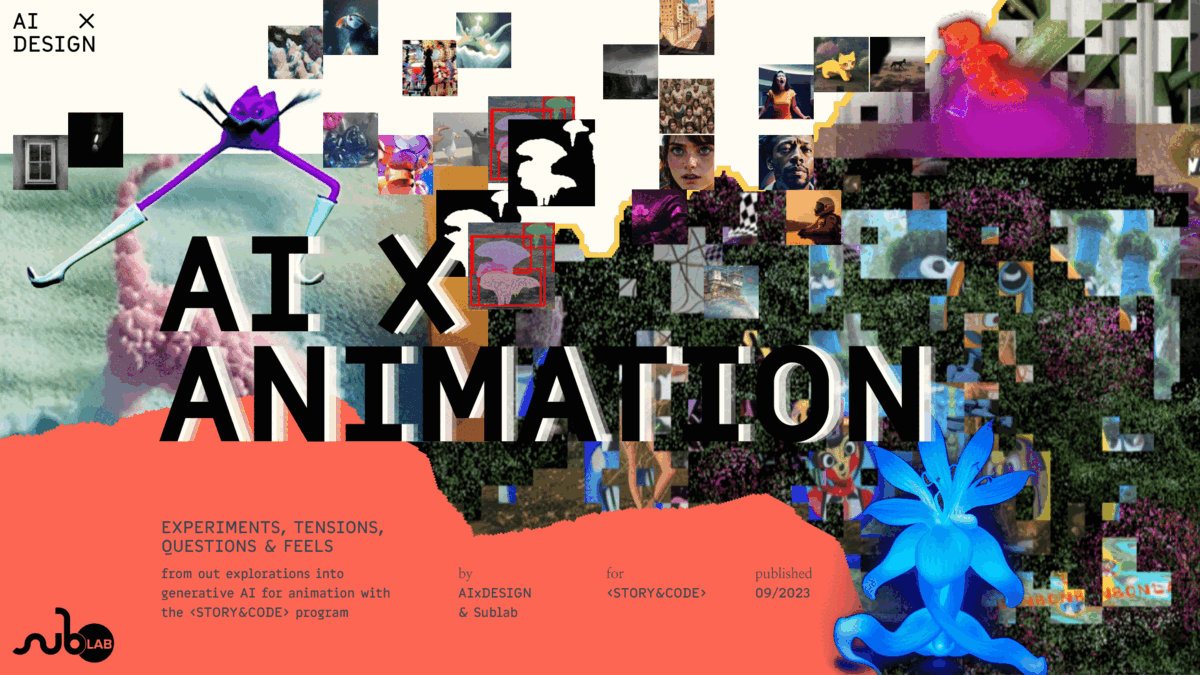Beyond Search: Creative Interfaces for A/V Archives
IMG: Visual overview of the report
From March – October 2023 I was working as researcher-in-residence with Beeld & Geluid and FIAT/IFTA to research Exploratory Interfaces for A/V Archives. The research is expressed into a report, which is published in two-fold:
- a linear downloadable PDF which you can read + download here
- a Miro board to serve as a living document, including the report itself, other links and notes from my research process, and hopefully future additions from the community – which you can access here
In short:
- The research took a case study approach and puts forth a diverse collection of inspiring examples & prototypes from various domains and disciplines showcasing different ways of interacting with (A/V) archives
- They’re set into 4 themes: Generous + Fluid Interfaces; Situated + Experiential Entry Points; Computational Sensing + Algorithmic Metadata; and Participatory Sense-Making + Storytelling
- The focus here is on the UX of archives and exploratory approaches; not to disrupt common practices such as keyword search but to explore new pathways for user interaction with A/V archives alongside the more conventional methods
IMG: Richard Vijgen, ‘The Future Through Artificial Eyes’, 2021. Picture: Aad Hoogendoorn. Source: tegenlicht.hetnieuweinstituut.nl
Press release
The Audiovisual Research Alliance, in collaboration with FIAT/IFTA’s Value, Use and Copyright Commission, is pleased to announce the release of Beyond Search: Exploring Creative Approaches to Interfacing with Cultural Heritage Collections (A Case Study Analysis) written by independent researcher Nadia Piet.
Beyond Search delves into the realm of digital audiovisual (AV) archives, focusing on user experience and advocating for the integration of exploratory approaches alongside conventional search.
Within cultural heritage institutions, conventional keyword-based search interfaces have long served as the primary means to access digital AV archives. However, these interfaces often fall short of addressing the diverse needs of users and serving more exploratory or open-ended queries.
Drawing on a series of illustrative case studies, this report showcases innovative practices in the cultural heritage domain. Furthermore, it looks beyond archives to seek inspiration from practitioners in other disciplines, such as artists, filmmakers, and community initiatives grappling with similar questions.
The research report identifies four core themes:
- #1: Generous + Fluid Interfaces
- #2: Situated + Experiential Entry Points
- #3: Computational Sensing + Algorithmic Metadata
- #4: Participatory Sense-Making + Storytelling
At the end of each theme, a Practical Pointers “over to you” section is offered. Here, opportunities and challenges, as well as additional tools and resources, are highlighted, inviting you to put inspiration into action by orienting towards implementation and kicking off a conversation at your institution.
The Creative Commons licensed report can be found at www.beeldengeluid.nl/avresearchalliance or downloaded directly as PDF here.
To continue the conversation around this research, you’re welcome to read and add to the Living Doc version, presented as a Miro Board here.
Nadia presented the research on October 19th during the FIAT/IFTA World Conference 2023 during one of the breakout sessions.
I’d like to give a final big thank you to everyone who has been a part of this work. I stepped into this project in February being deeply intrigued but knowing very little about archives. I had a very enjoyable & generative time diving deep into this realm and its caring practices while exchanging thoughts with so many kind and committed practitioners.
I hope the research proves to be a valuable resource that inspires and contributes to existing initiatives around living archives, exploratory approaches, and design experimentation with the archives and its materials.
If you find this report useful or interesting, please share it with your network or anyone you think might benefit from it. If time allows, enrich the research by adding your comments or links in the Miro (there’s a section for community contributions). And of course, don’t hesitate to reach out if you have any questions or ideas to build on this work in the future.

